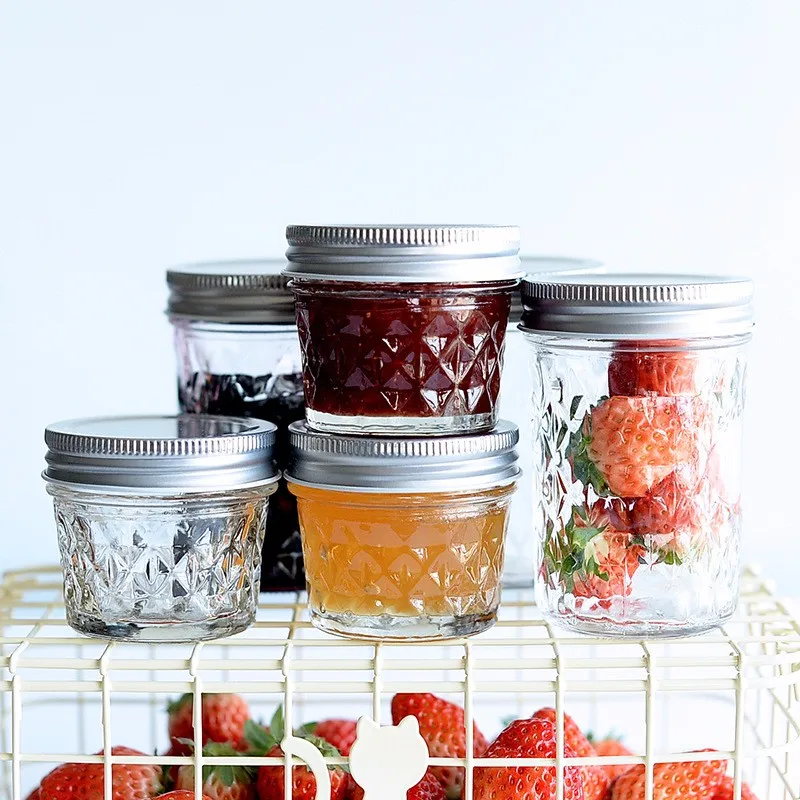What can i feed my baby chameleon
7 Care Tips & Facts You Need to Know
Chameleons are some of the most iconic reptiles in the world.
This family of lizards is famous for their beautiful colors and ability to change hue.
Despite their popularity there is a lot of misinformation on how to care for a baby chameleon. Babies stress easily, are not domesticated and have specific diet and housing requirements.
Caring for a baby chameleon is difficult and not recommended for beginners.
If you are looking to adopt this species then read this article first to learn how to take care of them.
Table of Contents
- What Is A Baby Chameleon Called?
- Do Baby Chameleons Make Good Pets?
- How Much Does A Baby Chameleon Cost?
- Do Baby Chameleons Bite?
- How To Feed Baby Chameleon
- How Fast Do Baby Chameleons Grow?
- How To Care For A Baby Chameleon
- Enclosure Set Up
- Plants and Branches
- Temperate and Lighting
- Why Do Baby Chameleons Die?
- Summary
What Is A Baby Chameleon Called?
When a Chameleon is first born they are called hatchlings. They are only considered hatchlings for the first 24 to 48 hours as they hatch from their egg.
After their first 48 hours they are simply called “Chameleons” and not baby Chameleons!
The term Chameleon does not refer to a specific species but is an umbrella term for a family of lizards.
Chamaeleonidae are a unique group of arboreal lizards that live in tropical and warm climates.
There are more than 100 subspecies worldwide that fall under this umbrella term. Some of the most popular species are the colorful panther chameleon and the vibrantly colored green veiled species.
Do Baby Chameleons Make Good Pets?
Chameleons are popular pet reptiles. They have beautiful colors and unique physical characteristics such as their ornate crests and prehensile tails.
Even though adults are fascinating pets, Baby Chameleons are not recommended for inexperienced keepers.
Taking care of this species takes a lot of work – especially when compared to other lizard species such as leopard geckos, skinks and bearded dragons.
They need very specific amounts of vitamin A, D and UV light. In order to provide them with the correct amount of each vitamin you will need to feed them a pre-formed vitamin.
You will also need to make sure you are feeding them a correct diet. Food in captivity is often less nutrient dense than in the wild that can lead to nutritional metabolic bone disease.
Finally, you will need to provide your lizard with a proper UV lighting fixture and habitat. They are extremely sensitive to nutritional or environmental changes and stress very easily.
If you decide to buy a Baby Chameleon it is not uncommon for them to die during shipping. This is due to the stress they undergo during transit.
You should also avoid handling him as much as possible. This species is not domesticated and does not like to be handled.
Repeatedly touching young Chameleons will likely lead to premature death.
How Much Does A Baby Chameleon Cost?
There are over 100 subspecies of Chameleon. The price of a baby Chameleon depends on their subspecies. Many species can be purchased for $30 to $100. However rare individuals such as the Veiled species can cost $400.
The price of a baby Chameleon depends on their subspecies. Many species can be purchased for $30 to $100. However rare individuals such as the Veiled species can cost $400.
Males are generally hardier and have more vibrant colors. This makes them more expensive than females.
Here is a list of some species sold in the United States and their price range:
| Species | Price (USD) |
|---|---|
| Elliot’s | $30 to $90 |
| Dwarf Fisher’s | $30 to $90 |
| Jackson’s | $30 to $100 |
| Panther | $200 to $400 |
| Veiled | $200 to $500 |
Panther Chameleons are expensive because they can only be purchased captive bred. Panthers are from Madagascar and their importation to the USA has been banned since the 1970s.
They are also capable of drastic color changes. This is because of the photonic crystals on their skin. Males can change their color from dark green to bright orange.
Males can change their color from dark green to bright orange.
The most expensive Chameleon is the veiled species. Their unique appearance and ability to change the brightness of their skin makes them a popular pet.
Baby veiled species can change how bright their skin appears based on their mood. Bright colors represent happiness or anger. Darker colors can indicate stress.
Do Baby Chameleons Bite?
Chameleons can be aggressive and territorial.
If you handle a scared Chameleon you risk him biting you. Larger species like the panther species have a very strong bite.
They will extend their legs and puff out their throat if they perceive you as a threat. They will also become bright in color and hiss at you as a warning. At this point you should walk away from your pet and allow them to relax.
Remember Chameleons are not domesticated pets.
They are not comfortable being handled by humans.
Baby Chameleons should be handled as infrequently as possible. This will help to avoid aggression and health problems.
This will help to avoid aggression and health problems.
When approaching a baby you should never make sudden movements. Quick movements seem predatorial to a baby.
If possible it is best to avoid handling altogether.
How To Feed Baby Chameleon
In the wild Baby chameleons eat a variety of insects.
Their diet can include crickets, mealworms, roaches, flies, spiders and more.
Baby chameleons should eat 10 to 20 crickets, roaches or worms every day. These insects should be gut loaded and smaller than the size of your lizard’s head.
Make sure you feed a variety of insects. Do not just feed crickets or worms. Try to include non-toxic butterflies and grasshoppers. You can also feed hawk moths, fruit flies and ants.
Store purchased insects are suitable provided they are prepared properly and gut loaded. In order to gut load the insects feed them fresh fruit and vegetables such as dandelion leaves and potted hibiscus plants.
Once you have prepared the insects use prongs or tweezers to grab them and place them in the enclosure. Your Baby chameleon is a hunter in the wild. They will instinctually know what to do once they see food.
Your Baby chameleon is a hunter in the wild. They will instinctually know what to do once they see food.
Make sure to feed the gut loaded insects within 24 hours to your lizard.
Once each week dust the insects with a calcium supplement. This supplement should have no vitamin D and little to no phosphorus.
Twice a month feed a multivitamin containing Vitamin A and a low amount of vitamin D3. It is important to provide just the right amount of these vitamins. Too much of a certain vitamin can lead to health issues.
Finally, you need to provide a fresh water source.
In the wild Chameleons obtain their water from droplets on plant leaves or other surfaces. To mimic this you should mist their enclosure. The frequency of misting depends on their species:
- You should spray a Panther chameleon’s enclosure two to four times a day. You can also build a water drip system with a plastic cup.
- For a veiled you should provide a continual one-minute spray once in the evening when the lights are off.

How Fast Do Baby Chameleons Grow?
Monitoring the growth of your baby chameleon is very important.
Growth is a good indicator of proper husbandry.
If a Chameleon is given the proper diet then you can expect a baby to grow one to two inches per month.
Many owners track a young chameleon’s growth each month to make sure they are developing properly. If your Chameleon suddenly stops growing, or starts to lose weight, it can be a sign of stress or improper husbandry.
Below is a growth chart for a baby veiled chameleon. Panther chameleons follow the same growth rate, but are generally larger as adults:
| Age | Size |
|---|---|
| 48 hours | 2 inches |
| 2 weeks | 3 inches |
| 1 month | 5 inches |
| 3 months | 7 inches |
| 8 months | 9 to 14 inches |
| 12 months | 17 to 24 inches (male) 10 to 14 inches (female) |
How To Care For A Baby Chameleon
In order to properly take care of a baby chameleon you must set up a proper enclosure and lighting.
The specific setup can vary between species but their requirements are generally the same.
Enclosure Set Up
Chameleons should have a tall plastic-coated wire mesh enclosure placed at eye level.
Baby Chameleons should not be able to see their reflection as this can lead to stress. This means you should not use a glass enclosure.
They are also susceptible to UV ray damage. Because of this you should not place their enclosure near a window or skylight.
Young Chameleons should be housed in an enclosure at least 16 x 16 x 30 inches.
After six months they should be transferred to an adult-sized 60-gallon enclosure.
Plants and Branches
Chameleons are specifically adapted for arboreal habitats. In order to make their habitat suitable to live in you must provide them with décor to climb. To do this you can place vines and branches in their enclosure.
In addition to branches you will need to plant plants in their enclosure too. Bonsai trees, Ivy, Ferns and Orchids are good choices.
Bonsai trees, Ivy, Ferns and Orchids are good choices.
Plants will help them feel safe. Providing real plants has been shown to decrease their stress level.
Fake plants can be used, but they should be boiled in hot water for at least 15 minutes to kill possible bacteria.
Regardless of whether you decide to use real or fake plants, they will need to be tall standing and placed throughout the length of the enclosure.
Temperate and Lighting
Baby Chameleons should live in an enclosure that is between 75 to 85°F with 40% to 60% humidity. This temperate can be achieved with proper lighting.
Panther chameleons should be given a 40-watt UVB bulb for 50 hours a week.
Veiled chameleons should have a ceramic reflector dome with a UVA bulb placed six inches above the highest basking perch. The bulb should reach 90 to 95°F during the day.
If the enclosure is still too cold you can also add a 50W ceramic heat emitter.
Substrate
Chameleons spend most of their time up high in their enclosure.
Because of this, unless you plan to use real plants, it is unnecessary to place any substrate at the bottom of their tank.
If you do decide to use real plants in the enclosure then use topsoil without added fertilizer. Harsh chemicals from pesticides and unnatural fertilizer can harm your baby chameleon.
You can also use reptile carpet; however, the loops can snag on the claws of your chameleon.
Why Do Baby Chameleons Die?
Many Baby Chameleons die in captivity because of stress or poor husbandry.
Babies are not as adaptable to change as other pet lizards. It can be very difficult for first time keepers to provide suitable husbandry to this species.
Continual stress due to improper nutrition, humidity, temperature, hygiene, lighting and disease is extremely common.
A mistake beginners make is thinking that Chameleons are a good pet for children. They are not! Another common mistake is assuming this species likes to be handled. They do not!
They do not!
Beginners will need to work very hard to provide a proper habitat and diet for this pet.
Feeding store bought insects will not be enough.
You need to provide a variety of insects that are gut loaded. Their diet must also be supplemented as Baby Chameleons need vitamins A and D, calcium and phosphorus.
Without these essential nutrients your Chameleon is at risk of a variety of health problems. Low levels of vitamin A can lead to stunted growth, blindness and reproduction difficulty.
Summary
In order to keep a baby Chameleon healthy you need to do your research beforehand. Research will help you provide proper husbandry and increase the likelihood of keeping a healthy Chameleon.
At a minimum make sure you:
- Provide vitamin A and D3 supplements twice a month.
- Dust their insects with calcium powder once a week.
- Provide a tall mesh enclosure at least 16 x 16 x 30 inches (filled with climbing plants).

- Place their enclosure at eye level.
- Do not handle them.
The amount of effort required to take care of and keep this lizard healthy is a lot. These beautiful reptiles are not suited to everyone.
If you do decide that this species is right for you make sure you buy from a reputable breeder.
Let us know if you have kept a baby chameleon in the comments below.
What to Feed Hatchling Chameleons
admin2022-05-27T05:28:11-07:00Waiting for chameleon eggs to hatch is a lesson in patience, but once they hatch there is a flurry of activity to care for the hatchlings. This page reviews what you need to know about feeding hatchling or newly born chameleons. For the purposes of this write-up, live birth chameleons are treated exactly the same. I will make it simple and refer to them as baby chameleons from now on. I will cover feeding topics from hatching or birth to about three months old. This information is appropriate for first time breeders with their first clutch of eggs, the first time owner that purchased an egg, and the owner of a live bearing species who just walked down the stairs and was surprised by 30 baby chameleons crawling around the cage.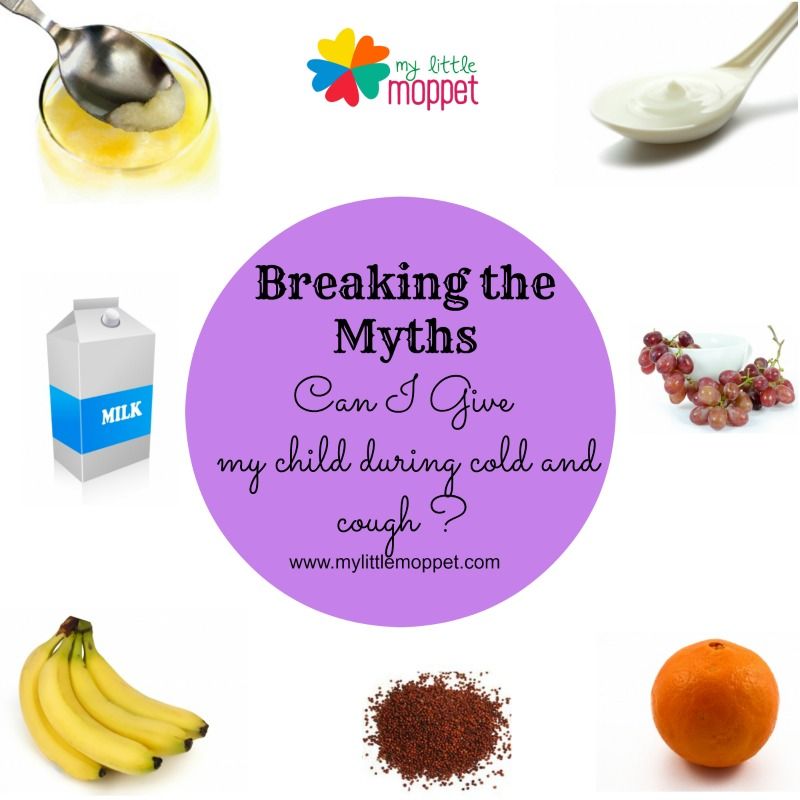 Whether you have months to plan or are surprised by babies or have one or 60, this page will get you taken care of with respect to feeding your chameleons.
Whether you have months to plan or are surprised by babies or have one or 60, this page will get you taken care of with respect to feeding your chameleons.
Video Episode Player
Podcast Episode Player
When do baby chameleons start eating?
The first thing to know about feeding baby chameleons is that their mission in life is to eat as much as they can to grow as fast as they can to mature and reproduce. So your little baby will be a eating machine. And we need to have ample food available to feed this need. Do not be surprised if they do not eat within 24 hours of hatching or being born, but it won’t be long at all after that that they will be searching for things that fit in their mouths.
Note on Caging Baby Chameleons
Before I get into the actual feeding I need to address the effect of caging on feeding.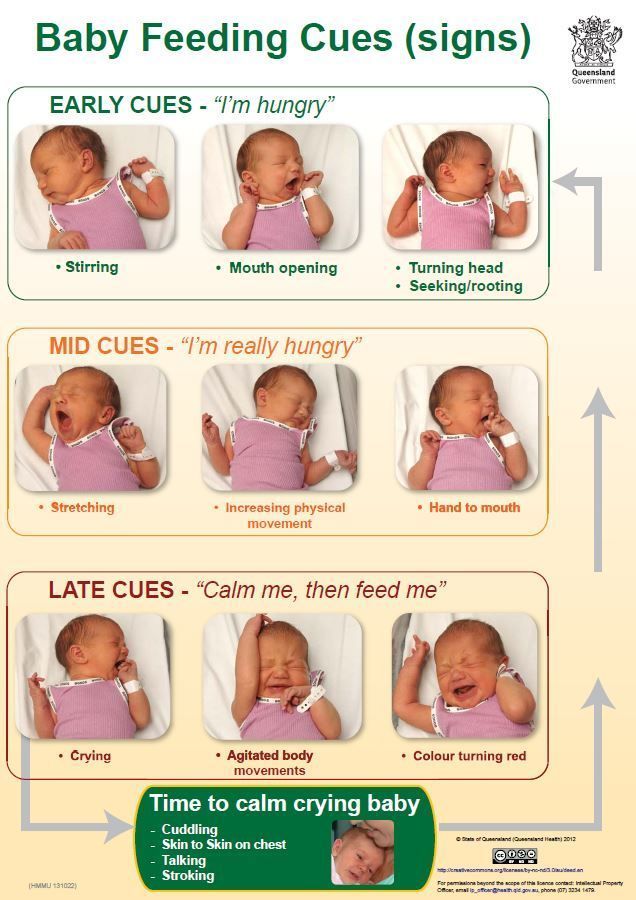 Chameleons should be raised separately. It is by having a room all to their own that they will eat and grow to their full potential. One component of when chameleons bully each other is that the bully will intimidate the victim into not eating as much. And this is a bullying that does not register in human minds. You look at the group and you don’t see physical fight breaking out and you think all is well. But it is not well and your chameleons are growing at a decreased rate because they are not eating their fill. And, they are dealing with the stress of living with a bully. And, yes, it is normal for there to be a hierarchy. Chameleons establish dominance and the submissive one suffers. So, in this episode about feeding I need to start by saying that the best preparation you can do is to prepare one cage for each egg you have. If you have a live bearer, well good luck. You just have to make an educated guess as to how many babies you might have and set-up a number of cages over that! But it isn’t that babies will immediately beat up on each other so being together for the first weeks while you get everything setup is not going to be a big deal.
Chameleons should be raised separately. It is by having a room all to their own that they will eat and grow to their full potential. One component of when chameleons bully each other is that the bully will intimidate the victim into not eating as much. And this is a bullying that does not register in human minds. You look at the group and you don’t see physical fight breaking out and you think all is well. But it is not well and your chameleons are growing at a decreased rate because they are not eating their fill. And, they are dealing with the stress of living with a bully. And, yes, it is normal for there to be a hierarchy. Chameleons establish dominance and the submissive one suffers. So, in this episode about feeding I need to start by saying that the best preparation you can do is to prepare one cage for each egg you have. If you have a live bearer, well good luck. You just have to make an educated guess as to how many babies you might have and set-up a number of cages over that! But it isn’t that babies will immediately beat up on each other so being together for the first weeks while you get everything setup is not going to be a big deal.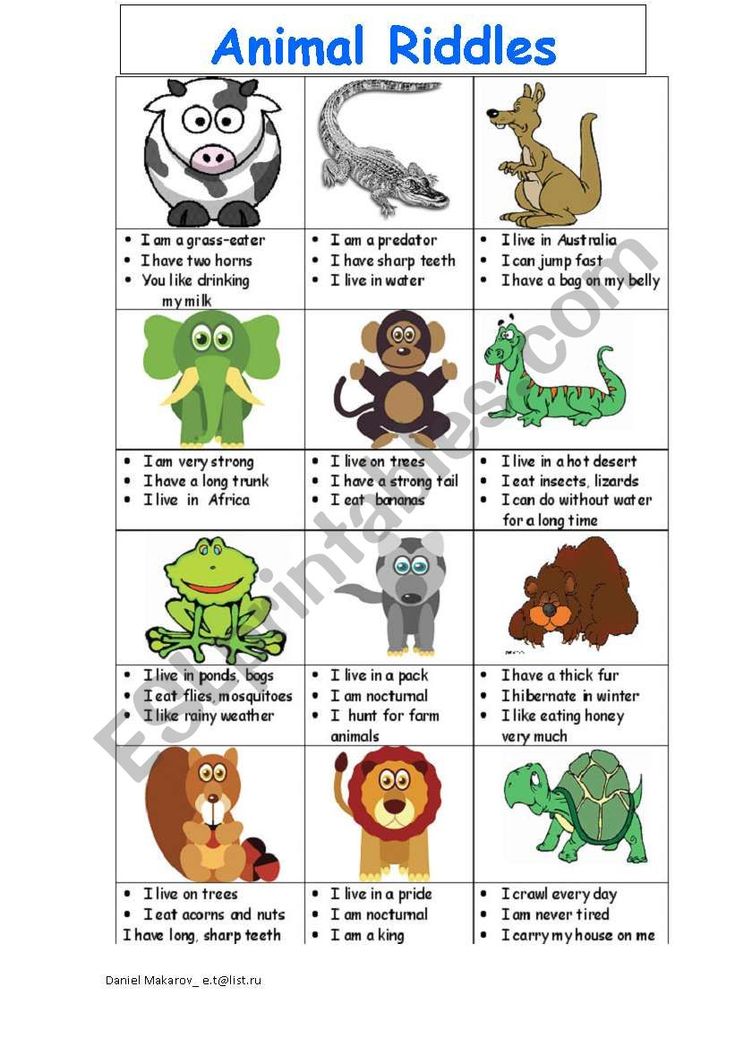
What do baby chameleons eat?
Chameleons will eat anything that moves and will fit in their mouth. There are many great feeders out there, but I am going to limit my coverage to the commercially available species that are the easiest to get a hold of. Each country will have differing choices so I will not be able to make that a worldwide claim. But hopefully there is enough overlap that this will be useful no matter where you are. I will cover fruit flies, bean beetles, and pin head crickets. These are easy to reproduce and are readily available. That said, each has their advantages and disadvantages.
Preparing for baby chameleons
There are two scenarios when babies show up. They were either part of an incubating clutch and expected, or else they may have been a complete surprise and live birthed by a female which may or may not have been known to be gravid. But if you do have time to prepare then you make an educated guess as to when the eggs will hatch. And then make sure you have everything setup a month before the due date. This means starting fruit fly and bean beetle cultures one month before they are expected to be needed. You may go through two or more generations of fruit flies by time the chameleon egg hatches because you will be lucky if the eggs hatch when you estimate. The best case is you are right. The second best case is that it takes longer and you have more time to fix things that go unexpectedly wrong, and the worst case scenario – I mean besides the eggs going bad – is that they come earlier when you aren’t ready. But the inconvenience of having a fruit fly farm as a side project is much better than having a baby chameleon hatch and no food to give them. I, personally, enjoy keeping a dart frog and so I am always making fruit fly cultures. This is actually much more necessary for me as I have a good number of live bearing chameleons and they sometimes like to surprise me.
But if you do have time to prepare then you make an educated guess as to when the eggs will hatch. And then make sure you have everything setup a month before the due date. This means starting fruit fly and bean beetle cultures one month before they are expected to be needed. You may go through two or more generations of fruit flies by time the chameleon egg hatches because you will be lucky if the eggs hatch when you estimate. The best case is you are right. The second best case is that it takes longer and you have more time to fix things that go unexpectedly wrong, and the worst case scenario – I mean besides the eggs going bad – is that they come earlier when you aren’t ready. But the inconvenience of having a fruit fly farm as a side project is much better than having a baby chameleon hatch and no food to give them. I, personally, enjoy keeping a dart frog and so I am always making fruit fly cultures. This is actually much more necessary for me as I have a good number of live bearing chameleons and they sometimes like to surprise me. Small litters aren’t always obvious. So having a dart frog (or ten) is a worthwhile project. I submit that to you as my weekly commitment to finding new ways to get you in trouble with the spouse. You already are on shaky ground for starting a fruit fly farm. May as well run with it.
Small litters aren’t always obvious. So having a dart frog (or ten) is a worthwhile project. I submit that to you as my weekly commitment to finding new ways to get you in trouble with the spouse. You already are on shaky ground for starting a fruit fly farm. May as well run with it.
In recap, if you are incubating eggs, or an egg, or are seeing your live bearing female balloon up, it is a wise move to be prepared with individual cages already set up and fruit fly and bean beetle cultures in rotation.
Surprised by baby chameleons!
But what do you do if you are surprised? This can happen easily if the eggs hatch sooner than expected or you didn’t realize that your single female Jackson’s Chameleon was just storing sperm for a self-fertilization when the conditions were right. Or else you just learned that certain female Jackson’s Chameleons actually have three horns like the males. I can’t tell you how much confusion there is for people that don’t realize that there are a number of subspecies of Jackson’s Chameleons and in only one does the female not have horns. So, you can imagine the surprise when someone who thought they had a male suddenly finds babies all over.
So, you can imagine the surprise when someone who thought they had a male suddenly finds babies all over.
If you are surprised then getting food and are the top panic points. This episode is about the food part.
Unfortunately, both fruit fly and bean beetle cultures can take weeks to get going. This is not problem when you are starting the cultures a month before the due date. But when you suddenly have babies crawling all around, you do not have weeks for the fruit fly life cycle to take the scenic route. Luckily, pin head crickets, which are newly hatched crickets, are readily available and immediately useable as feeders.
So then a good plan, if you are surprised, is to immediately order yourself a shipment of pin head crickets. How many depends on how many babies. I order 40 pinheads per day per chameleon. So, if I have one baby Panther Chameleon I would order 280 pinhead crickets per week. I generously round up and go for the 500 count cup because you always want to err on the side of more. Crickets die and escape. Also order your fruit flies and bean beetle cultures now and get them started.
Crickets die and escape. Also order your fruit flies and bean beetle cultures now and get them started.
There is another hope for getting small food quickly. Set out a piece of fruit. If you have fruit flies wild in your area at this particular time of year you are in luck because you have all the free food you want. I create small deli cups filled with banana and let the fruit flies swarm. Be careful you don’t create a decaying fruit bog which a chameleon could get stuck in, but you’ll be fine if you change out the cups on a regular basis and you can always include a screen over the fruit. Just keep an eye on it.
If you have been surprised by baby chameleons take a look at this page written specifically for the surprise situation: Surprise! Baby Chameleons!
Fruit Flies for Baby Chameleons
Fruit flies are the perfect food for baby chameleons. We are lucky to benefit from the scientific community in that we can easily get a hold of flightless fruit flies. So they are much more easily contained and controlled! Flightless fruit flies are commonly available in two sizes. Just remember the smaller one comes with the bigger name! So we have Drosophila melanogaster which is the smaller one and Drosophila hydei which is the larger one. Which one you choose depends on the size of your babies. You can’t go wrong with going smaller so the melanogaster is the safest bet. Though, Panther, Veiled and Jackson’s babies usually can take the larger hydei from the beginning. Personally, I keep both sizes on hand.
We are lucky to benefit from the scientific community in that we can easily get a hold of flightless fruit flies. So they are much more easily contained and controlled! Flightless fruit flies are commonly available in two sizes. Just remember the smaller one comes with the bigger name! So we have Drosophila melanogaster which is the smaller one and Drosophila hydei which is the larger one. Which one you choose depends on the size of your babies. You can’t go wrong with going smaller so the melanogaster is the safest bet. Though, Panther, Veiled and Jackson’s babies usually can take the larger hydei from the beginning. Personally, I keep both sizes on hand.
When ordering fruit flies you can order them by name or, if you can’t remember what the name is, you can always ask for the smaller or larger variety and they will know what you are talking about. The one thing about ordering fruit fly cultures is that, if you need them now, you have to ask if they are “producing” which means that there are already flies in the cup. When the company creates the fruit fly cups it starts with a seed population of 20 or so flies. They lay eggs which hatch, turn into larvae which pupae and then emerge as 100s of flies. This whole process can take 14 days for melanogaster, the small one, to 21 days for hydei, the larger one. Once flies emerge you can keep getting flies for a week or two. If you are buying these cups and you have a sense of urgency, it is a good idea to ask at what stage the cups are. Usually we ask, are they “producing”, meaning are they actively producing adult flies that can be fed immediately. If you are preparing a month before then it doesn’t really matter, but if you have hungry mouths to feed right now, it may be an important thing to know.
When the company creates the fruit fly cups it starts with a seed population of 20 or so flies. They lay eggs which hatch, turn into larvae which pupae and then emerge as 100s of flies. This whole process can take 14 days for melanogaster, the small one, to 21 days for hydei, the larger one. Once flies emerge you can keep getting flies for a week or two. If you are buying these cups and you have a sense of urgency, it is a good idea to ask at what stage the cups are. Usually we ask, are they “producing”, meaning are they actively producing adult flies that can be fed immediately. If you are preparing a month before then it doesn’t really matter, but if you have hungry mouths to feed right now, it may be an important thing to know.
Fruit flies are easy to culture yourself and many reptile supply companies will sell you mixes and kits that make it even easier. To create fruit fly cultures you need plastic cups with a ventilated top, nutritious medium, excelsior (which is like wood shavings for them to climb on), and your small group of adult flies.
I use 32 oz deli cups with ventilated lids that have a cloth ventilation so the fruit flies can’t get out and wild fruit flies can’t get in. If there is any chance, your wild fruit flies will get in and have a party. While wild fruit flies are great feeders, they refuse to stay contained as they are fully flighted. I can tell you from experience that clouds of fruit flies within the house tend to make other people in the house cranky.
You can make your own culture media which goes on the bottom of your cup like tan mashed potatoes, but I prefer to get premade mix that I can just add water to and go on with my life. It is this media that has all the nutrients and the fruit flies will eat. There are many companies that offer these mixes. Currently, I use the fruit fly media from Repashy and I have been happy with that.
One important thing to remember when you are working with the media is usually you are using boiling water to mix it. Let this cool before you put the flies in the cup or else you will kill the poor flies.
On top of the media you often see excelsior which is long thin strips of curling wood. It is used for packing and art projects, but we use it in our fruit fly cups to give the fruit flies some place to perch and hang out. And that is it. Keep your cultures in the mid 70s for temperature and around 65% humidity and you should be good.
Bean Beetles for Baby Chameleons
Bean beetles are a curious creature that lives entirely on beans. The scientific name is Callosobruchus maculatus
But that is such an unwieldy thing to try and remember, that everyone just calls them bean beetles. Chameleons love the crunchy snack. They may be a bit big for the smallest of babies, but those on the small side will quickly grow to the size of taking in the bean beetles.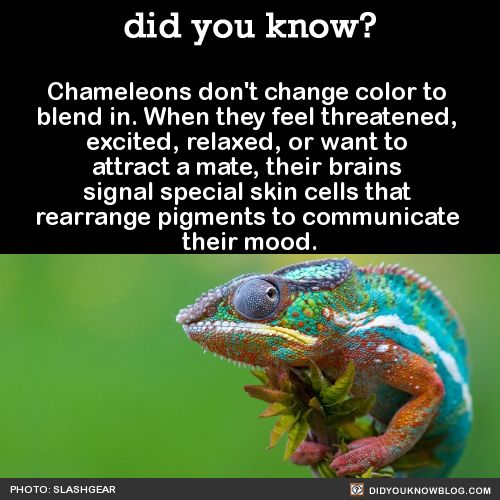 They do fly when agitated, but they are not strong fliers so you don’t get clouds of them. They just fly from one point to another.
They do fly when agitated, but they are not strong fliers so you don’t get clouds of them. They just fly from one point to another.
Culturing them is as easy as putting a number of them in a cup of beans. You can use black eyed peas, mung beans, or adzuki beans. With those beans in a 32 ounce deli cup with ventilated lid, you add the beetles and then something like a toilet paper tube stuffed in to the bean pile to provide a climbing surface and an easy way to get the beetles out. It will take 4 or so weeks for the seed group of adults to have laid eggs and that new generation to come out. Simply keep them in temperatures in the low 80s and you should have lots of bean beetles. I make new cultures every weekend to keep things fresh as the culture cup will crash after a couple of lifecycles.
As I mentioned, bean beetles fly when agitated so you want to move quickly when messing with them. Even if you are using fruit flies as your staple food item, bean beetles are a great choice to provide dietary variety.
Pin head crickets for Baby Chameleons
And, finally, we have pin head crickets. The name “pin head” isn’t a species. It refers to their size. Breeding crickets is not terribly complex, but it does require a pretty high level of work. I have tried a number of times, have been successful in producing loads of hatchling crickets, but have found maintaining an entire breeding colony of crickets to be more work than I am willing to put into it. But, if you have the gumption to do so, then it really is not a problem to breed your own crickets.
Whether you buy or breed them, you need to place a high priority on making sure they are fed properly. I keep mine in a Sterilite container with egg crates to climb on and a food dish that has a variety of fruits, vegetables, grains, and one of the various cricket chows available.
I get my baby chameleons transitioned to crickets within a month because crickets do a very good job of putting on the weight.
Resources
Now, you may be wondering how to get started with culturing your own fruit flies or bean beetles. We are fortunate that the reptile community has grown to the point where we have ample availability of supplies. If you are just starting out, the easiest way to do this is to just buy a kit. I know Joshsfrogs.com has complete kits for fruit flies and bean beetles. Once you get some experience under your belt or are doing this long term, that is the time to start buying parts individually. I buy the Repashy Superfly fruit fly mix from any Repashy retailer. My cups and lids come from TSK.com and Excelsior I get at art stores. But go that route only if you plan on producing fruit flies at a large scale.
We are fortunate that the reptile community has grown to the point where we have ample availability of supplies. If you are just starting out, the easiest way to do this is to just buy a kit. I know Joshsfrogs.com has complete kits for fruit flies and bean beetles. Once you get some experience under your belt or are doing this long term, that is the time to start buying parts individually. I buy the Repashy Superfly fruit fly mix from any Repashy retailer. My cups and lids come from TSK.com and Excelsior I get at art stores. But go that route only if you plan on producing fruit flies at a large scale.
Supplements for baby chameleons
Babies come out of the egg or from the mother with a built-in store of nutrients to get them started in life. How well off they are depends on the nutrition the mother had. While you can continue to have effect on the baby’s nutrition in live bearers through the incubation period, an egg layer has to get the transfer of nutrients all done in the gestation period which is commonly 30 days 7 to 12 or 24 months ago. So the question comes – at what point do we start in with our supplementation powders? And there isn’t a clear answer on this. I know of breeders that start in with powders that have vitamin A and D3, two fat soluble vitamins, right away and some that refuse to use powders until months old. As I see success with multiple approaches I don’t have a firm guideline that I can say if you stray from here there will be death and destruction. So I will present my personal approach and you can decide what you would like to do.
How well off they are depends on the nutrition the mother had. While you can continue to have effect on the baby’s nutrition in live bearers through the incubation period, an egg layer has to get the transfer of nutrients all done in the gestation period which is commonly 30 days 7 to 12 or 24 months ago. So the question comes – at what point do we start in with our supplementation powders? And there isn’t a clear answer on this. I know of breeders that start in with powders that have vitamin A and D3, two fat soluble vitamins, right away and some that refuse to use powders until months old. As I see success with multiple approaches I don’t have a firm guideline that I can say if you stray from here there will be death and destruction. So I will present my personal approach and you can decide what you would like to do.
Since my babies all have access to UVB I am not worried about them getting enough Vitamin D3.
I start to provide a 50/50 mix of calcium and bee pollen as a light dusting around the two week mark. I will continue to provide them with calcium/bee pollen and feeder insects with a rich gutload. Some astute students may then ask why all my care summaries have a multivitamin powder recommended if I do not use them myself. The answer is that I cannot tell you why I can give only calcium and bee pollen and not have cases of vitamin A deficiency and others do. I haven’t figured out what about my gutloading or situation leads to that success. Thus I have to have a multivitamin in the care summaries as a safety net so that it is effective to as many people as possible. Even if people are getting sufficient vitamin A precursors from their gutloading, the small amount of vitamin A in the multivitamin won’t cause a problem so it is a good insurance policy to use the multivitamin. If I were to use a multivitamin I would start in at about two months. But there is no study or data to prove that is a better time than any other time.
I will continue to provide them with calcium/bee pollen and feeder insects with a rich gutload. Some astute students may then ask why all my care summaries have a multivitamin powder recommended if I do not use them myself. The answer is that I cannot tell you why I can give only calcium and bee pollen and not have cases of vitamin A deficiency and others do. I haven’t figured out what about my gutloading or situation leads to that success. Thus I have to have a multivitamin in the care summaries as a safety net so that it is effective to as many people as possible. Even if people are getting sufficient vitamin A precursors from their gutloading, the small amount of vitamin A in the multivitamin won’t cause a problem so it is a good insurance policy to use the multivitamin. If I were to use a multivitamin I would start in at about two months. But there is no study or data to prove that is a better time than any other time.
So, that is what I do. I present it only as something that has worked for me and it takes its place alongside numerous other approaches that appear to work as well. I know it is sometimes frustrating when there isn’t a black and white answer, but this is where we are. As soon as I have a black and white answer to give, you’ll be the first to know.
I know it is sometimes frustrating when there isn’t a black and white answer, but this is where we are. As soon as I have a black and white answer to give, you’ll be the first to know.
UVB, Heat, and Hydration for baby chameleons
Everything is connected in nature. So too here. Any discussion about feeding baby chameleons must include a look at UVB, heat, and hydration. All three of these, in appropriate levels, are necessary for the adequate processing or supplementation of the food eaten.
The proper UVB allows the chameleon to create vitamin D3 through its skin.
The proper heat levels are necessary for digestion. Consult the care summary to determine what the basking temperature must be.
And hydration is critical for chameleons to digest food and eliminate waste.
Be very careful, though of how much UVB, heat, and hydration you put into the system as babies can easily be overwhelmed. If you use smaller cages, everything is in miniature and you need to adjust for the delicate bodies of the baby chameleons.
Each species may have a slightly different need on these parameters so find a caresheet written by someone who has actually worked with the species you have. Or, better yet, be nice to a breeder and ask questions! What ever you do, make sure the babies are getting the proper levels for that species.
I am sure it comes as a surprise to no one that keeping a chameleon is really taking care of the environment around the chameleon and letting the chameleon take care of themselves.
Conclusion
Everything is connected in nature. So too here. Any discussion about feeding baby chameleons must include a look at UVB, heat, and hydration. All three of these, in appropriate levels, are necessary for the adequate processing or supplementation of the food eaten.
The proper UVB allows the chameleon to create vitamin D3 through its skin.
The proper heat levels are necessary for digestion. Consult the care summary to determine what the basking temperature must be.
And hydration is critical for chameleons to digest food and eliminate waste.
Be very careful, though of how much UVB, heat, and hydration you put into the system as babies can easily be overwhelmed. If you use smaller cages, everything is in miniature and you need to adjust for the delicate bodies of the baby chameleons.
Each species may have a slightly different need on these parameters so find a caresheet written by someone who has actually worked with the species you have. Or, better yet, be nice to a breeder and ask questions! What ever you do, make sure the babies are getting the proper levels for that species.
I am sure it comes as a surprise to no one that keeping a chameleon is really taking care of the environment around the chameleon and letting the chameleon take care of themselves.
animal and vegetable food, vitamins
Not only fluffy cats, friendly dogs and talkative parrots can be pets. Some people keep at home an exotic reptile - a chameleon. This unusual pet requires special conditions of detention, proper care and special nutrition, which has a certain value for the reptile organism.
In the article we will consider the nutritional features of chameleons, what food they can and cannot be given, in what quantity, and the peculiarity of the drinking regimen.
Food of chameleons in the wild
In their natural habitat, chameleons feed on various insects, chicks, small lizards and other mammals.
The main part of the daily diet is insects - spiders, crickets, worms, flies, caterpillars, etc. Smart animals do not eat stinging and poisonous insects. Even if the reptile is very hungry, it will not hunt a potentially dangerous prey.
Tree fruits and green leaves make up a small part of the diet.
Feeding chameleons at home
Exotic lizards living at home require a special diet. Reptiles cannot eat the usual foods that are typical for the human table. Despite the fact that vegetables and fruits still make up a certain part of the menu, the priority food for a chameleon is food of animal origin.
Food of animal origin
Animal products for the chameleon are insects. The most useful food is crickets and locusts.
The most useful food is crickets and locusts.
What other insects can be fed to the chameleon:
- food cockroaches;
- grasshoppers;
- flies;
- spiders;
- May beetles;
- dragonflies;
- Zophobos, wax moth larvae and mealworms can be given 3-4 times a month (frequent feeding of these insects can cause liver failure).
Large species of chameleons can be fed with small mice. Such a treat should not be given to a pet more than 2 times a month.
Plant foods and vitamin supplements
Pet lizards can be fed plant foods - green leaves, vegetables, some fruits.
What can be given to a chameleon:
- green lettuce leaves;
- dandelions;
- grapes;
- cherries;
- bananas;
- melons and watermelons;
- tangerines, oranges;
- kiwifruit;
- apples.
Special mineral-vitamin supplements are created for pet reptiles, necessary to ensure a complete diet and maintain physical health.
Useful vitamins for chameleons:
- Calcium is an extremely important element for the body of reptiles. It strengthens bones and improves dental health. With its deficiency, metabolic bone disease (rickets) develops.
- Phosphorus is a useful component that regulates the correct balance of vitamins and minerals in the body. It must be consumed in the correct ratio with calcium.
- Vitamin D3 - strengthens the immune system, maintains normal levels of calcium and phosphorus in the body of the lizard.
- Vitamin A - ensures the normal functioning of the visual organs, maintains healthy bones and immunity.
Even the most beneficial vitamins and minerals in excess can cause serious health problems. An excess of phosphorus contributes to the development of heart and kidney failure. High levels of vitamin A lead to nervous system disorders and liver problems. Vitamin D3 in large quantities negatively affects the condition of muscles and nerves.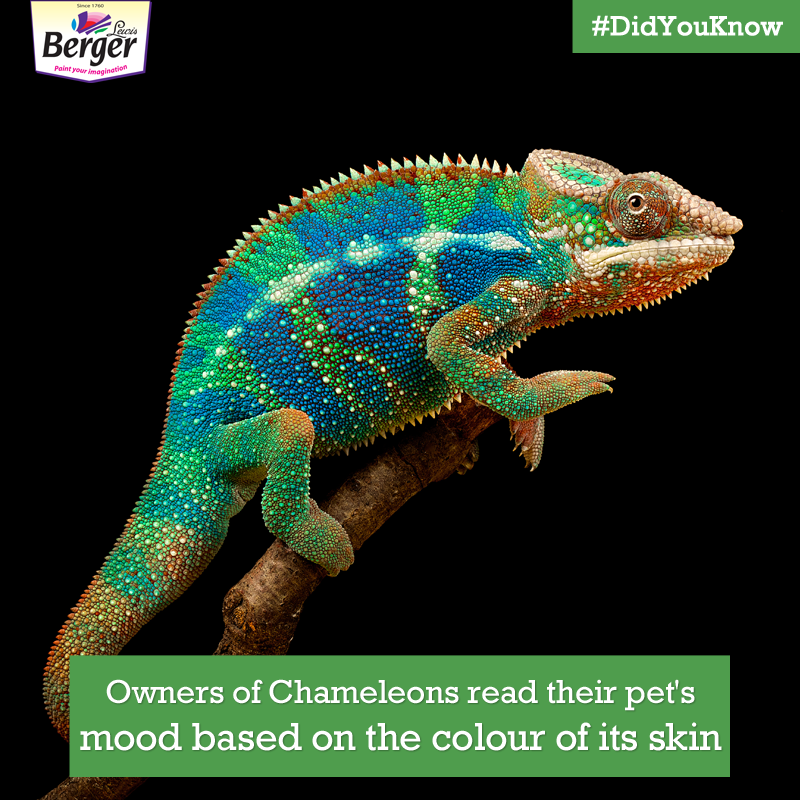
The best solution is to buy special food with the right ratio of useful microelements.
Methods of feeding
Fruit is served to domestic lizards in small pieces from tweezers or from hands. You can also hang the product on the branches of terrarium plants.
Be as gentle as possible when feeding with tweezers. The lizard can snatch food sharply and damage its teeth. To eliminate this, purchase special tweezers with soft tips for feeding the chameleon.
Feed and vitamin and mineral supplements can be placed in the feeder in the terrarium. It is better to choose dishes made of plastic or glass. To prevent live insects from getting out of the feeder, grease the sides of the dishes with oil.
How often to feed the chameleon
Young lizards are fed daily, 2 times a day. Adult chameleons eat once every two days. It is advisable to feed the pet according to the regimen, serve food at the same time.
Features of the drinking regime
In their natural habitat, chameleons get water from raindrops or dew on plants.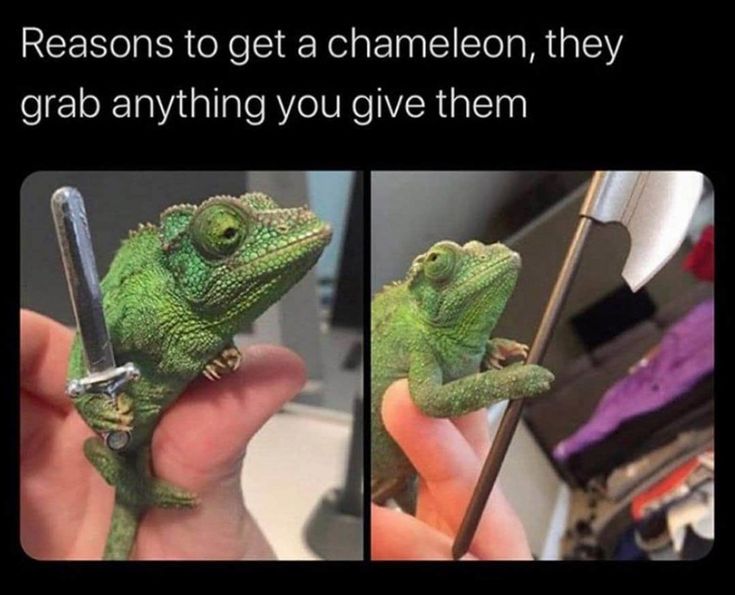 To provide a domestic lizard with drinking water, it is recommended to spray water on the plants in the terrarium from a spray bottle. You need to do this up to 4 times a day, but you should control the level of humidity in the terrarium. The optimal indicator is 60-90%. To exclude the reproduction of pathogenic bacteria, it is necessary to ensure good ventilation of the terrarium.
To provide a domestic lizard with drinking water, it is recommended to spray water on the plants in the terrarium from a spray bottle. You need to do this up to 4 times a day, but you should control the level of humidity in the terrarium. The optimal indicator is 60-90%. To exclude the reproduction of pathogenic bacteria, it is necessary to ensure good ventilation of the terrarium.
Some owners purchase mini-waterfalls or fountains for their pets, which provide water for the pet lizard and create a beautiful view in the terrarium.
In our store you can buy online everything you need to keep and feed your pet chameleon. The catalog contains high quality products from trusted manufacturers. Vitamin and mineral supplements necessary for the health of chameleons are also available.
How to feed a chameleon? Feeding process
Absolutely all chameleons are predators. Under natural conditions, their diet consists of various living creatures, which they can catch with their weapon - the tongue. Small chameleons are content with insects, large ones also diversify their diet with rodents, lizards and even small birds. It is clear that these exotics will not be able to eat food from the master's table. Therefore, you will have to take care that the diet of your little dinosaur is close to natural.
Small chameleons are content with insects, large ones also diversify their diet with rodents, lizards and even small birds. It is clear that these exotics will not be able to eat food from the master's table. Therefore, you will have to take care that the diet of your little dinosaur is close to natural.
Animal food in the diet of a chameleon
Nutritionally optimal food for chameleons is crickets (Banana, Brownie, Two-spotted). They are bought at pet stores or grown on their own. Depending on your pet's appetite, 3 to 10 insects may be needed per day.
Equally useful for chameleons and locusts. An adult chameleon usually needs one insect per day.
Another delicacy for reptiles is feed cockroaches (Marble, Turkmen, American, Argentinean). But they are inferior in nutritional value to crickets and locusts.
Meal worms, wax moth larvae, and Zophobos are offered to reptiles in small quantities. Although these insects are usually very fond of chameleons, frequent feeding of them can lead to liver failure of the animal. This food is very fatty, they should not pamper the ward more often than 3-4 times a month.
This food is very fatty, they should not pamper the ward more often than 3-4 times a month.
In addition to the above, flies, spiders, grasshoppers, cockchafers, dragonflies, stick insects, etc. can be included in the chameleon's diet from time to time.
Don't feed your chameleon only crickets or locusts, for example. It is necessary to provide the pet with a diet of at least 2-3 types of insects.
Under natural conditions, chameleons eat insects, the nutritional value of which is significantly higher than the food that we buy in pet stores or breed ourselves. Therefore, do not forget to enrich the livestock offered to the pet with vitamins and mineral supplements.
Never offer reptile bees or wasps. Most likely, the animal will simply ignore such "food". The fact is that chameleons from birth can distinguish poisonous insects from those suitable for food. But if the reptile nevertheless dares to try such a treat, it will almost certainly be stung on the tongue, which will end in failure.
Adult chameleons of large species (Parsoni, Yemeni, Panther) will not refuse newborn mice. But keep in mind that such a delicacy in large quantities harms the animal's digestive system and liver - you can give it no more than twice a month.
Do chameleons eat plant food?
Many species of chameleons, in addition to animal food, do not refuse vegetable food. In the wild, it can be berries, fruits, tender leaves of plants.
Each chameleon may have a preference for plant foods. At home, try offering your pet tangerines, oranges, cherries, grapes, apples, watermelons, melons, bananas, dandelions, lettuce, etc. Despite the fastidiousness of chameleons, something will please your pet.
For some species, such as the Yemeni chameleon common in terrarium collections, plant foods are a must in the diet.
Plant food is offered with tweezers or by hand. Fruit should be cut into small pieces. You can fix fruit slices and berries on the branches of terrarium plants.
Now let's talk more about the process of feeding the chameleon.
An adult reptile takes food once every 2 days, young individuals - 2 times a day. It is better to feed the chameleon at the same time.
Spray the walls of the terrarium and the chameleon itself with clean, warm water from a spray bottle. Usually these animals do not drink from drinkers. In nature, the reptile licks moisture droplets from the leaves of plants. At home, the chameleon gets the moisture it needs by licking off droplets that, after spraying, will remain on the walls of the terrarium and terrarium plants. A chameleon should drink at least twice a day - animals are prone to dehydration.
Chameleon feeding process
There are several options for feeding a chameleon. The easiest is to launch crickets or other insects into the terrarium. But this method has its drawbacks. Insects can simply leave the terrarium and scatter throughout the house. If crickets hide in all sorts of cracks inside the terrarium and then die, there will be an unpleasant smell. And sorting through the entire dwelling of a chameleon in search of insects is quite troublesome. Therefore, it is better and more practical to use a feeder.
And sorting through the entire dwelling of a chameleon in search of insects is quite troublesome. Therefore, it is better and more practical to use a feeder.
So, to feed the chameleon, you will need: tweezers, a container (a plastic jar or a glass), a jar of vitamins, any large container, live crickets. For one feeding, an adult chameleon, not suffering from a lack of appetite, can eat up to ten crickets. Therefore, it is better to buy a batch of insects for your pet right away and keep them in a large plastic container with holes for air access.
Take a large, clean jar and place 3 to 10 crickets in it (depending on your child's appetite). Pour Reptocal or Reptolife powdered vitamins there, designed specifically for reptiles. Shake the jar so that vitamin dust settles on the wings and legs of insects. Next, take a fairly tall plastic jar or cup (you need to pick up the container so that the chameleon reaches the very bottom with its tongue), place the cricket there and offer the pet.






